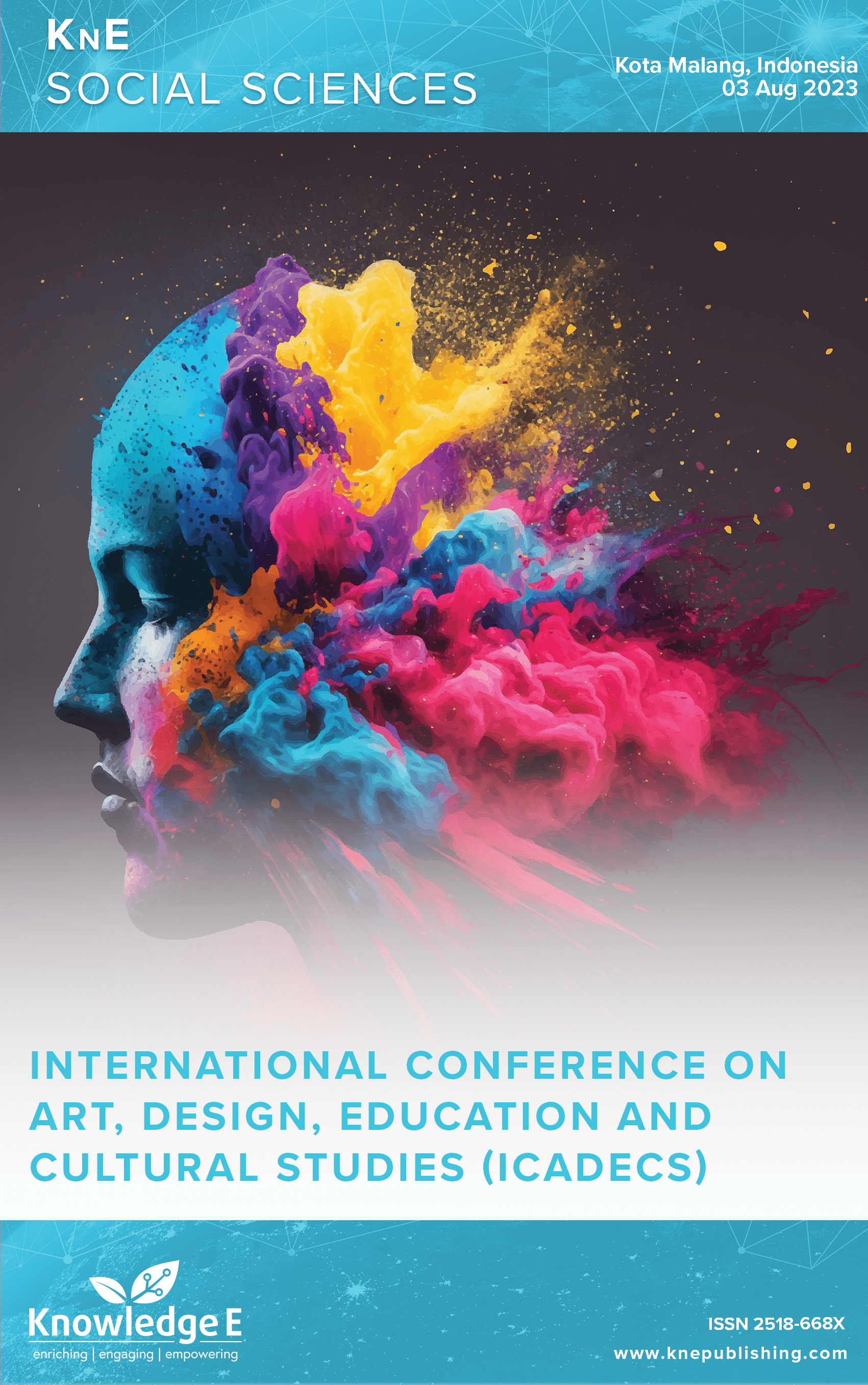Unlocking Creativity with Playful Probes
DOI:
https://doi.org/10.18502/kss.v9i15.16183Abstract
Acquiring data from potential users regarding their daily activities, especially young users or families, can present considerable challenges. Employing playful probes is a method for gathering data from young users; these probes are interactive, intuitive, and visually appealing. This approach allows users to express their thoughts in a non-traditional manner, producing rich qualitative data that can reveal the nuances of their perceptions and behaviors. Although only a few researchers have employed this technique in game design, it has shown great potential in gathering user information for the ideation process. However, there is a need for further exploration of this approach, especially when it comes to children as users. This study seeks to explore the potential of employing playful probes in game design and to identify any obstacles that may arise. Understanding the needs and characteristics of the target users is crucial to adapting the probes to effectively connect with them. By engaging participants in playful and immersive activities, design probes could provide deeper insights into the user and stimulate their creativity, leading to a more efficient final design that accommodates the wants and needs of the users.
Keywords: design probes, playful probes, game design, human-centered design
References
Gaver W, Dunne T, Pacenti E. Cultural Probes. Interactions (NYNY). 1999;VI(September):21–9.
Gaver B, Dunne T, Pacenti E. Design: cultural probes. Interactions (NYNY). 1999;6(1):21–9. DOI: https://doi.org/10.1145/291224.291235
Lange-Nielsen F, Lafont XV, Cassar B, Khaled R. “Involving players earlier in the game design process using cultural probes,” ACM Int. Conf. Proceeding Ser., pp. 45–54, 2012, DOI: https://doi.org/10.1145/2367616.2367622
S. Matos et al., Cultural probes for environmental education: Designing learning materials to engage children and teenagers with local biodiversity, vol. 17, no. 2 February. 2022. https://doi.org/10.1371/journal.pone.0262853. DOI: https://doi.org/10.1371/journal.pone.0262853
Wyeth P, Diercke C. “Designing cultural probes for children,” ACM Int. Conf. Proceeding Ser., vol. 206, pp. 385–388, 2006, DOI: https://doi.org/10.1145/1228175.1228252
Bernhaupt R, Weiss A, Obrist M, Tscheligi M. “Playful probing: Making probing more fun,” Lect. Notes Comput. Sci. (including Subser. Lect. Notes Artif. Intell. Lect. Notes Bioinformatics), vol. 4662 LNCS, no. PART 1, pp. 606–619, 2007, https://doi.org/10.1007/978-3-540-74796-3_60. DOI: https://doi.org/10.1007/978-3-540-74796-3_60
Mattelmäki T, Battarbee K. “Empathy Probes,” Pdc, no. June, pp. 266–271, 2002, [Online]. Available: http://rossy.ruc.dk/ojs/index.php/pdc/article/view/265
Loi D. Reflective probes, primitive probes and playful triggers. Conf Proc Ethnogr Prax Ind Conf. 2007;2007(1):232–45. DOI: https://doi.org/10.1111/j.1559-8918.2007.tb00079.x
Koch D, Maa S. Digital probes kit: A concept for digital probes. I-Com (Berl). 2018;17(2):169–78. DOI: https://doi.org/10.1515/icom-2018-0016
Hutchinson H, et al. “Technology probes,” no. 5, pp. 17–24, 2003, https://doi.org/10.1145/642611.642616. DOI: https://doi.org/10.1145/642611.642616
Christiansen L, Gudiksen S. “Play probes: understanding young people through playful expressions,” Learn X Des. Conf. Ser. Learn. 2021;2021:24–6.
Bernhaupt R, Obrist M, Weiss A, Beck E, Tscheligi M. Trends in the living room and beyond: results from ethnographic studies using creative and playful probing. Comput Entertain. 2008;6(1):1–23. DOI: https://doi.org/10.1145/1350843.1350848
Rönnberg S. Design Probes : A Good Method for Designing with Children. 2018. pp. 1–50.
Christiansen L. “Play probe: An approach that reveals emergent identity building in youth,” DRS2022: Bilbao, pp. 0–17, 2022, https://doi.org/10.21606/drs.2022.572. DOI: https://doi.org/10.21606/drs.2022.572
Ribeiro J, Andrade P, Carvalho M, Silva C, Ribeiro B, Roque L. Playful Probes for Design Interaction with Machine Learning: A Tool for Aircraft Condition-Based Maintenance Planning and Visualisation. Mathematics. 2022;10(9):1604. DOI: https://doi.org/10.3390/math10091604
Sjøvoll V, Gulden T. “Play probes - As a productive space and source for information,” Proc. 18th Int. Conf. Eng. Prod. Des. Educ. Des. Educ. Collab. Cross-Disciplinarity, E PDE 2016, no. September, pp. 342–347, 2016.
Rodríguez I, Puig A, Tellols D, Samsó K. Evaluating the effect of gamification on the deployment of digital cultural probes for children. Int J Hum Comput Stud. 2020;137( January):102395. DOI: https://doi.org/10.1016/j.ijhcs.2020.102395
Tellols D, Samso K, Rodriguez I, Puig A. “Cultural probes for the gamification of energy awareness,” ACM WomENcourage, pp. 3–5, 2016.
Boehner K, Vertesi J, Sengers P, Dourish P. “How HCI interprets the probes,” Conf. Hum. Factors Comput. Syst. - Proc., no. April 2007, pp. 1077–1086, 2007, https://doi.org/10.1145/1240624.1240789. DOI: https://doi.org/10.1145/1240624.1240789
Smith MG, Witte M, Rocha S, Basner M. Effectiveness of incentives and follow-up on increasing survey response rates and participation in field studies. BMC Med Res Methodol. 2019;19(1):1–13. DOI: https://doi.org/10.1186/s12874-019-0868-8

